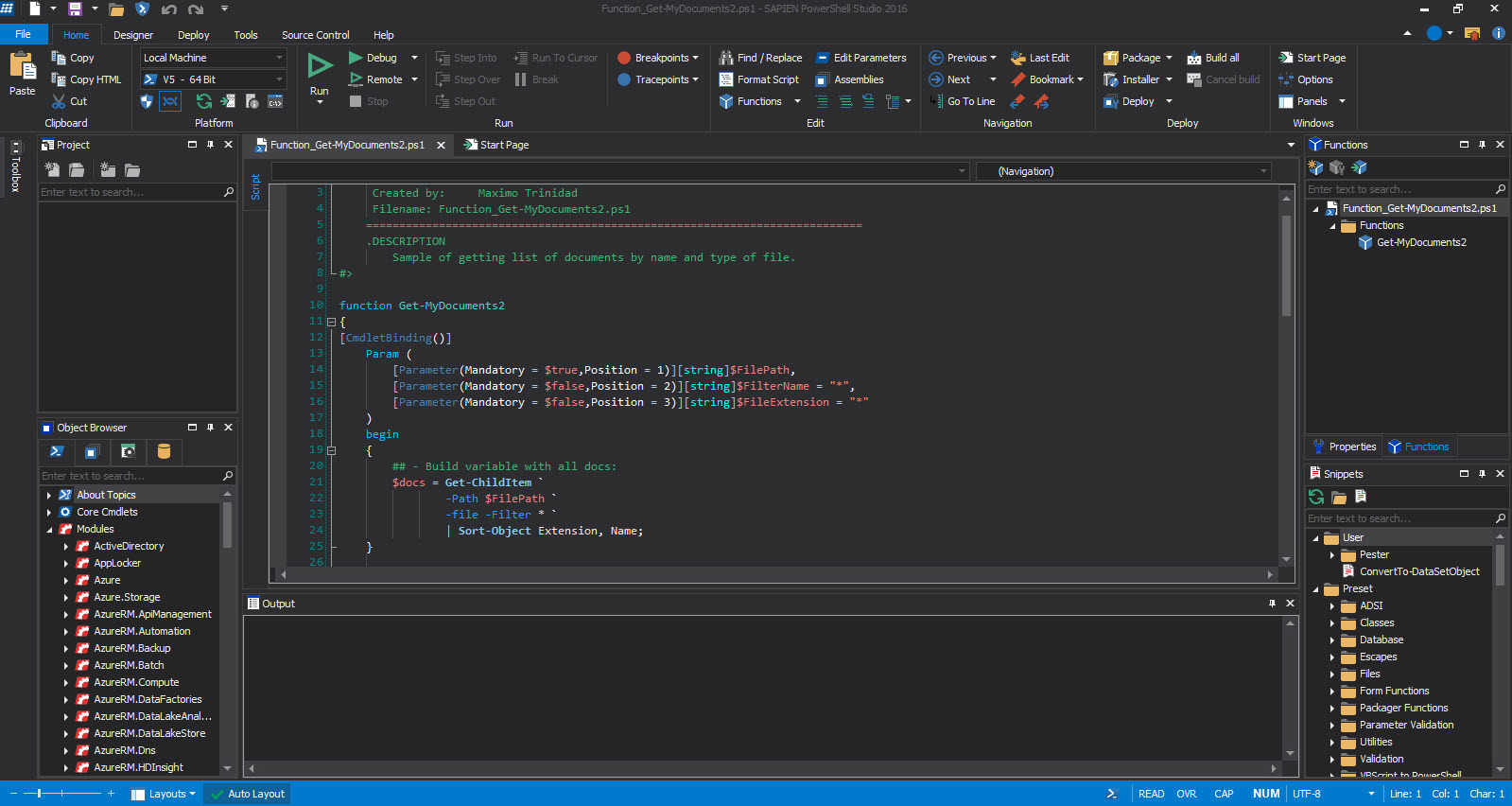

You want your tool to be flexible, but you don’t want your parameter names to be so difficult such that they are hard to use/remember. This step could take some time, and a little trial and error. Using a great combination of verb/noun syntax provides clarity to what your tool does. You can run Get-Verb in your console to quickly get a list! Tip: Use Get-Verb | Sort-Object to make this easier to parse! Whether this is a single function, or a series of functions that form a new module, you should consider the following: Your second step should be to consider your tool’s name. The sky is the limit here, but your first thing is to determine what it is that you are trying to accomplish. Think about what problem your tool is trying to solve. When setting out with the task of developing a tool you should, as a first step, stop and think. This could also be a tool you wish to share with the community, either via your own GitHub or by publishing to the PowerShell Gallery. These may be fellow technologists, or they could also be non-technical users within your organization. NET and object-oriented in nature, is a fantastic language for developing tooling that you can deliver to your end users.


 0 kommentar(er)
0 kommentar(er)
